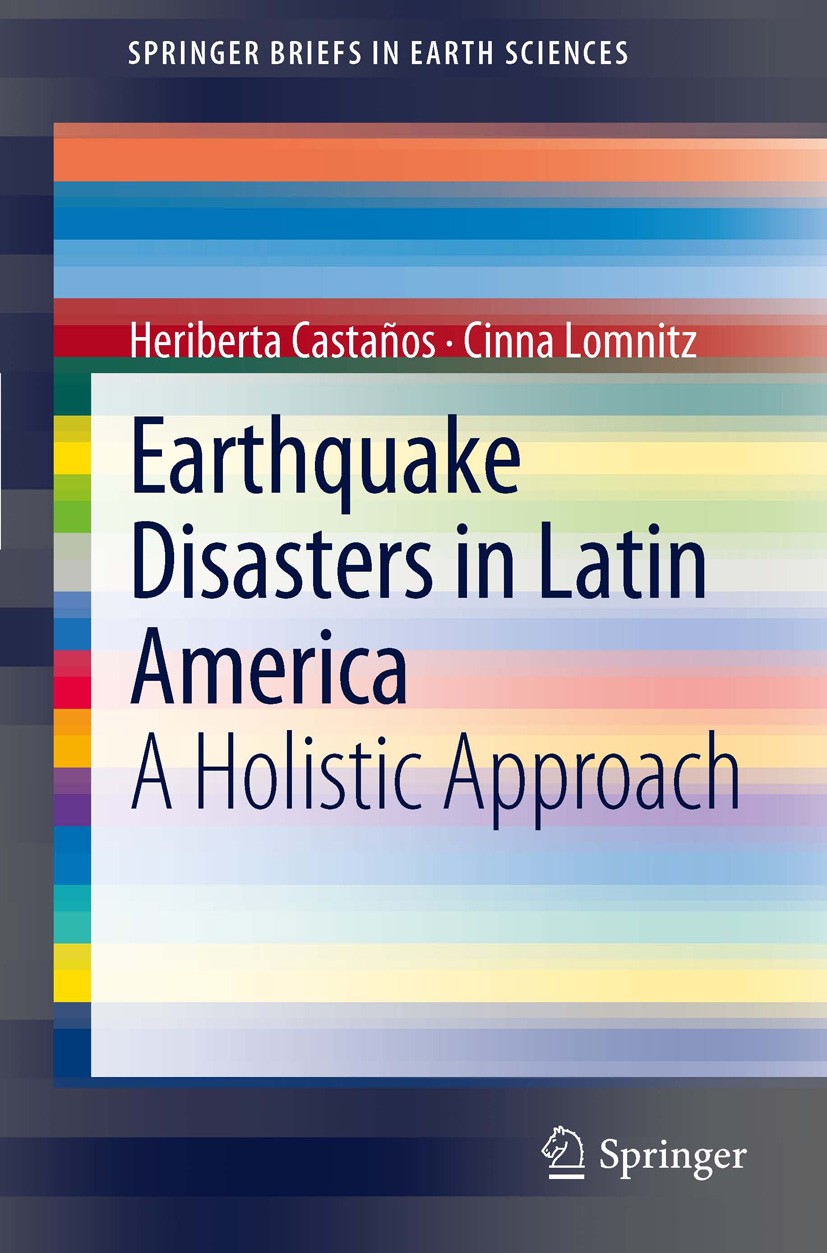| 书目名称 | Earthquake Disasters in Latin America |
| 副标题 | A Holistic Approach |
| 编辑 | Heriberta Castaños,Cinna Lomnitz |
| 视频video | http://file.papertrans.cn/301/300888/300888.mp4 |
| 概述 | Includes supplementary material: |
| 丛书名称 | SpringerBriefs in Earth Sciences |
| 图书封面 |  |
| 描述 | .This book is an attempt to demonstrate the analytical power of the holistic approach for understanding disasters. Six major earthquakes in Latin America are used as an example: the general idea is to place disasters in a broad social and regional context. Understanding disasters is a way of understanding the social system. The idea is to show that every major disaster is unique and different. Statistical methods may be useful for purposes of risk estimation but modern disasters are "systemic" and complex. In the chapter on the 2010 Chile earthquake we discuss the tsunami and why the system of tsunami alert did not work. The introductory chapter contains some basics of seismology (plate tectonics) and earthquake engineering. The 1985 Mexico earthquake describes why geology is important. Why was Mexico City founded in a lake? Technology must be adapted to the environment, not "imported" from possibly more advanced but different societies. The 1970 Peru earthquake is an example of disaster in a unique environment. Caracas 1967 takes us on a survey of different engineering solutions. And the 1960 Chile earthquake leads us on a retrospective survey--what has changed in Ch |
| 出版日期 | Book 2012 |
| 关键词 | Catastrophe theory; Disaster studies; Earthquake hazard; Risk governance; Sociology of risk; Vulnerabilit |
| 版次 | 1 |
| doi | https://doi.org/10.1007/978-94-007-2810-3 |
| isbn_softcover | 978-94-007-2809-7 |
| isbn_ebook | 978-94-007-2810-3Series ISSN 2191-5369 Series E-ISSN 2191-5377 |
| issn_series | 2191-5369 |
| copyright | The Author(s) 2012 |
 |Archiver|手机版|小黑屋|
派博传思国际
( 京公网安备110108008328)
GMT+8, 2025-12-25 22:45
|Archiver|手机版|小黑屋|
派博传思国际
( 京公网安备110108008328)
GMT+8, 2025-12-25 22:45


